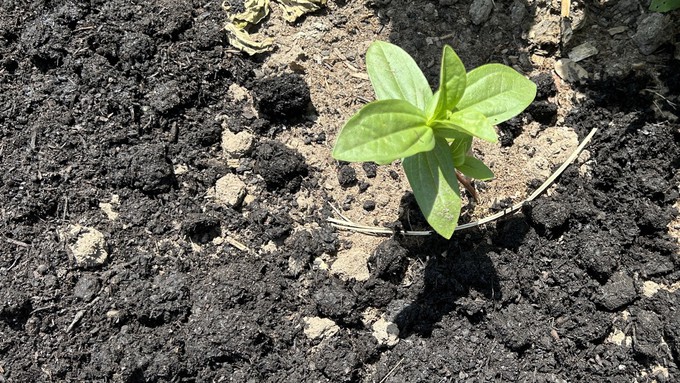
Learn how to make your own 'garden gold'

Compost makes great mulch for plants already growing, and will improve the soil over time, too. Kathy Morrison
One of the best ways to help your garden get through the heat of summer: Mulch.
This blanket of organic matter not only keeps roots cooler, but maintains moisture and feeds soil microbes.
Some of the best mulch? Well-aged compost – especially if made with your own kitchen scraps and garden waste.
Find out more, including how to make your own “garden gold,” during two free workshops offered by the Roseville Utility Exploration Center.
“Compost and Mulch” will be held on two Saturdays: Aug. 19 at the RUEC Tech Lab, 1501 Pleasant Grove Blvd., and repeated on Sept. 23 at the Maidu Community Center, 1550 Maidu Drive, Roseville. Each 90-minute class starts at 10 a.m.
Registration is required. Roseville’s workshops fill up quickly and seating is limited, so sign up now.
Here’s the class description: “Did you know yard debris and kitchen scraps can improve your soil? It’s true! Composting reduces waste sent to the landfill, helps you create your own free fertilizer, and saves water. Learn about bins, equipment, and materials used in a variety of composting styles.”
To sign up for “Compost and Mulch” or other free Roseville workshops: https://www.roseville.ca.us/residents/utility_exploration_center.
Comments
0 comments have been posted.Sacramento Digs Gardening to your inbox.
Food in My Back Yard Series
April 29: What's (already) wrong with my tomato plants?
April 22: Should you stock up on fertilizer? (Yes!)
April 15: Grow culinary herbs in containers
April 8: When to plant summer vegetables
April 1: Don't be fooled by these garden myths
March 25: Fertilizer tips: How to 'feed' your vegetables for healthy growth
March 18: Time to give vegetable seedlings some more space
March 11: Ways to win the fight against weeds
March 4: Potatoes from the garden
Feb. 25: Plant a fruit tree now -- for later
Feb. 18: How to squeeze more food into less space
Feb. 11: When to plant? Consider staggering your transplants
Feb. 4: Starting in seed starting
Sites We Like
Garden Checklist for week of May 4
Enjoy this spring weather – and get gardening!
* Plant, plant, plant! It’s prime planting season in the Sacramento area. Time to set out those tomato transplants along with peppers and eggplants. Pinch off any flowers on new transplants to make them concentrate on establishing roots instead of setting premature fruit.
* Direct-seed melons, cucumbers, summer squash, corn, radishes, pumpkins and annual herbs such as basil.
* Harvest cabbage, lettuce, peas and green onions.
* In the flower garden, direct-seed sunflowers, cosmos, salvia, zinnias, marigolds, celosia and asters. (You also can transplant seedlings for many of the same flowers.)
* Plant dahlia tubers. Other perennials to set out include verbena, coreopsis, coneflower and astilbe.
* Transplant petunias, marigolds and perennial flowers such as astilbe, columbine, coneflowers, coreopsis, dahlias, rudbeckia and verbena.
* Keep an eye out for slugs, snails, earwigs and aphids that want to dine on tender new growth.
* Feed summer bloomers with a balanced fertilizer.
* For continued bloom, cut off spent flowers on roses as well as other flowering plants.
* Add mulch to the garden to maintain moisture. Mulch also cuts down on weeds. But don’t let it mound around the stems or trunks of trees or shrubs. Leave about a 6-inch to 1-foot circle to avoid crown rot or other problems.